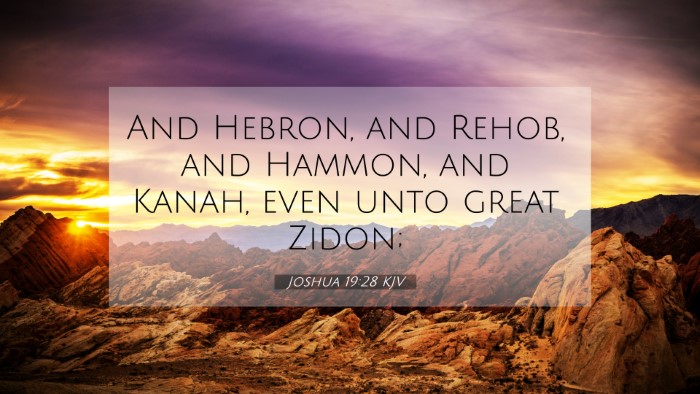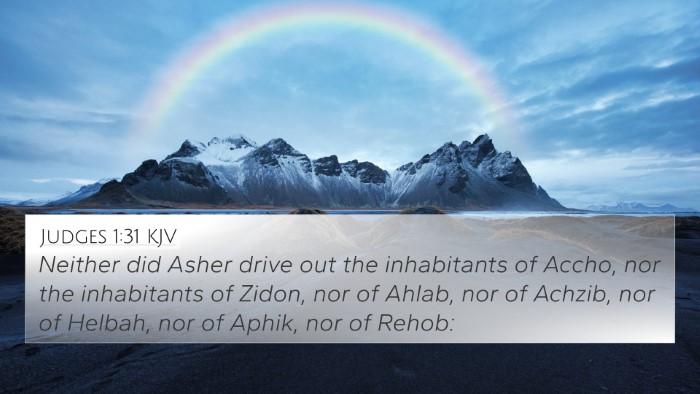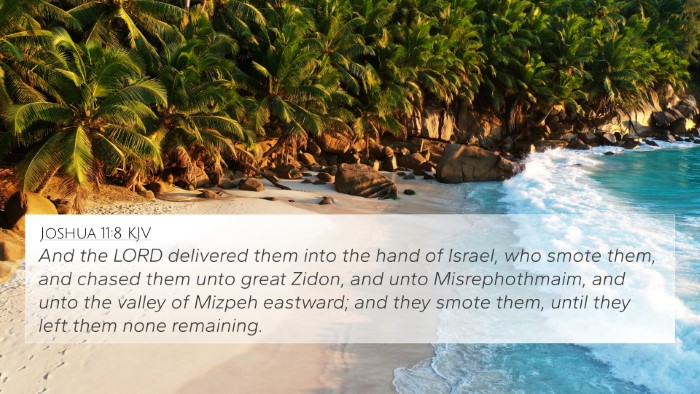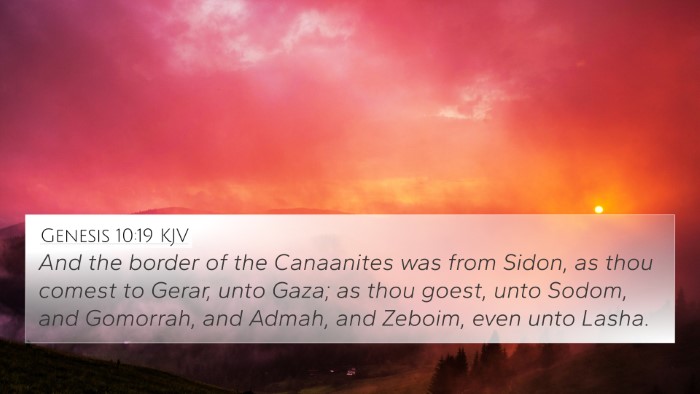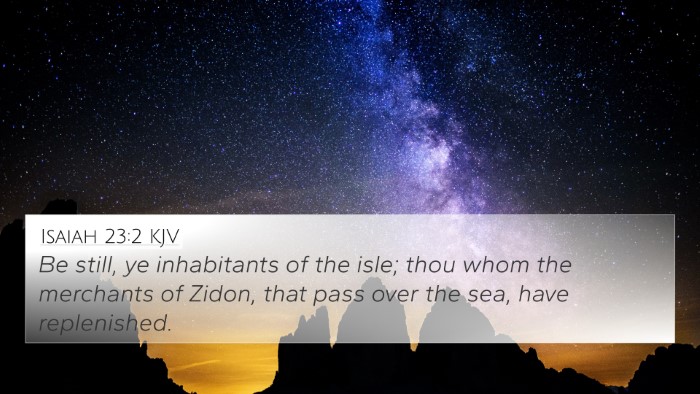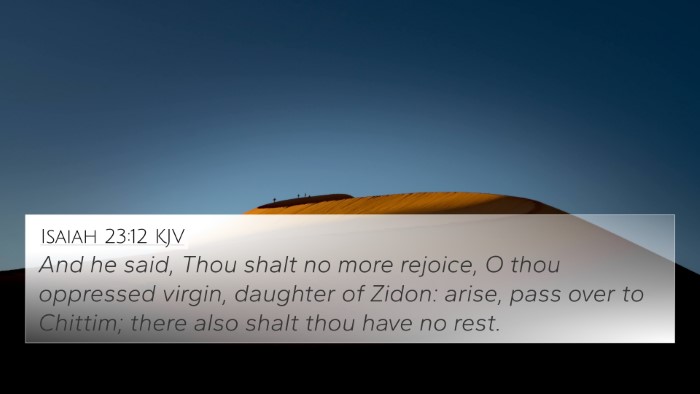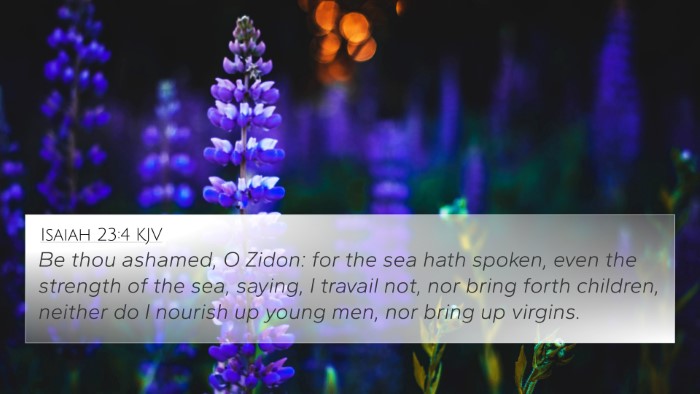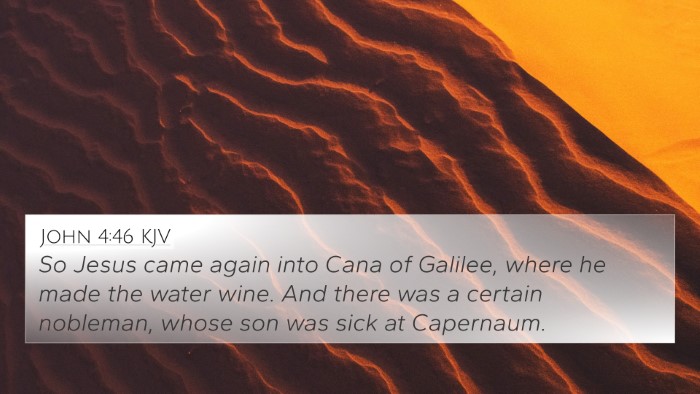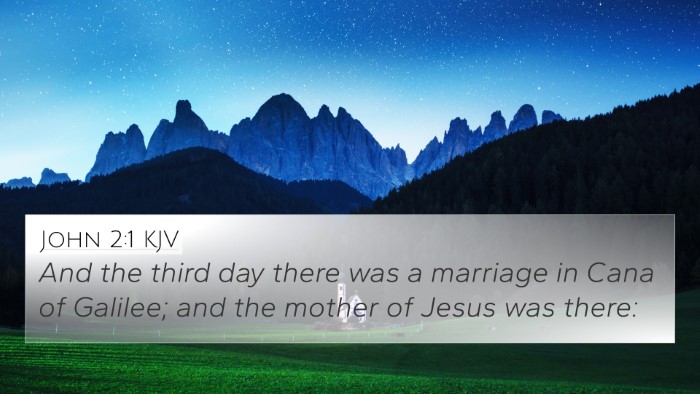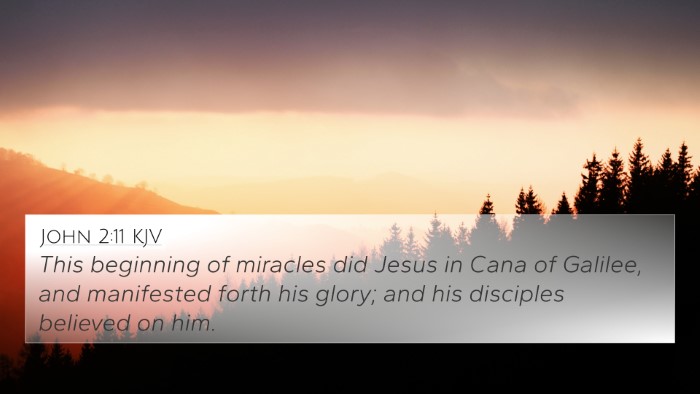Understanding Joshua 19:28
Verse Reference: Joshua 19:28 states: "And Hebron, and Rehob, and Zor, and Kileah, and the region of the city of the salt; and Engedi, and the cities of the South." This verse describes part of the territory allotted to the tribe of Judah during the division of the land of Canaan.
Summary of Biblical Context
The Book of Joshua narrates the conquest and settlement of the Promised Land by the Israelites. In this particular chapter, Joshua details the territorial boundaries and cities allotted to the tribes of Israel. The mention of key locations such as Hebron and Engedi hints at their significance not just geographically, but also in biblical history.
Commentary Insights
The following insights are drawn from public domain commentaries by prominent Biblical scholars:
-
Matthew Henry: Henry emphasizes the historical and spiritual significance of the cities mentioned in this context. He notes that Hebron is especially remarkable as it was the city of Abraham and later became a Levitical city. This underscores God's faithfulness in establishing these locations for the Israelites.
-
Albert Barnes: Barnes indicates that each city named carries its own history and importance. Engedi, for instance, is noted for its beauty and water supply, which symbolizes abundance in God's provision. The delineation of these areas also serves as a reminder of territorial inheritance.
-
Adam Clarke: Clarke points out that the list of cities is significant for understanding the comprehensive nature of God's promises to His people. The mention of “the region of the city of salt” denotes a particular economic and strategic importance that these locations held not only for the Israelites but also for surrounding nations.
Connecting Themes and Cross-References
The verse not only stands alone but also connects deeply with other scriptures, allowing for a more profound understanding of the Biblical narrative. Here are seven significant cross-references:
- Genesis 23:2: References to Hebron's history as the burial site of Abraham's family.
- Joshua 14:13-14: Discusses Caleb receiving Hebron for his inheritance, highlighting the faithfulness of God's people.
- 1 Samuel 30:1: Engedi's role as a refuge for David from Saul, linking the cities to personal stories in Israel's history.
- 2 Chronicles 28:17: References further conflict in the region around these cities, indicating their strategic importance.
- Matthew 2:23: Alludes to the prophetic connection between the geography of the Old Testament and the New Testament, particularly in the context of Jesus' upbringing in Nazareth.
- Psalm 63:1: A poetic mention of Engedi in the context of longing for God's presence, enriching its spiritual symbolism.
- Songs of Solomon 1:14: Also refers to Engedi in a poetic sense, connecting the idea of beauty and abundance.
Thematic Connections
This verse serves not only as a geographical reference but also speaks to several theological themes:
- Inheritance: The concept of land as an inheritance provided by God.
- God’s Faithfulness: Confirmation of God's promises to Israel throughout generations.
- Worship and Sacred Space: Cities like Hebron held religious significance, becoming places of worship and community.
Tools for Cross-Referencing
For those seeking to dig deeper into the connections between scripture, various tools are available:
- Bible concordance
- Bible cross-reference guide
- Online Bible study platforms that offer thematic searches
Exploring Inter-Biblical Dialogue
The importance of cross-referencing cannot be overstated, as it helps in understanding how different scriptures converse with one another, revealing the continuity of God’s plan throughout both the Old and New Testaments. The relationship between places and their stories fosters a richer reading of the Word.
Conclusion
Joshua 19:28 serves as a foundational verse within the narrative of Israel’s settlement. Its inclusion within a broader study allows for thematic exploration, highlighting God’s faithfulness in fulfilling His promises. By using cross-referencing tools and understanding how different verses relate to one another, readers can engage deeply with the biblical text, uncovering a network of connections that enrich their faith and understanding of Scripture.


